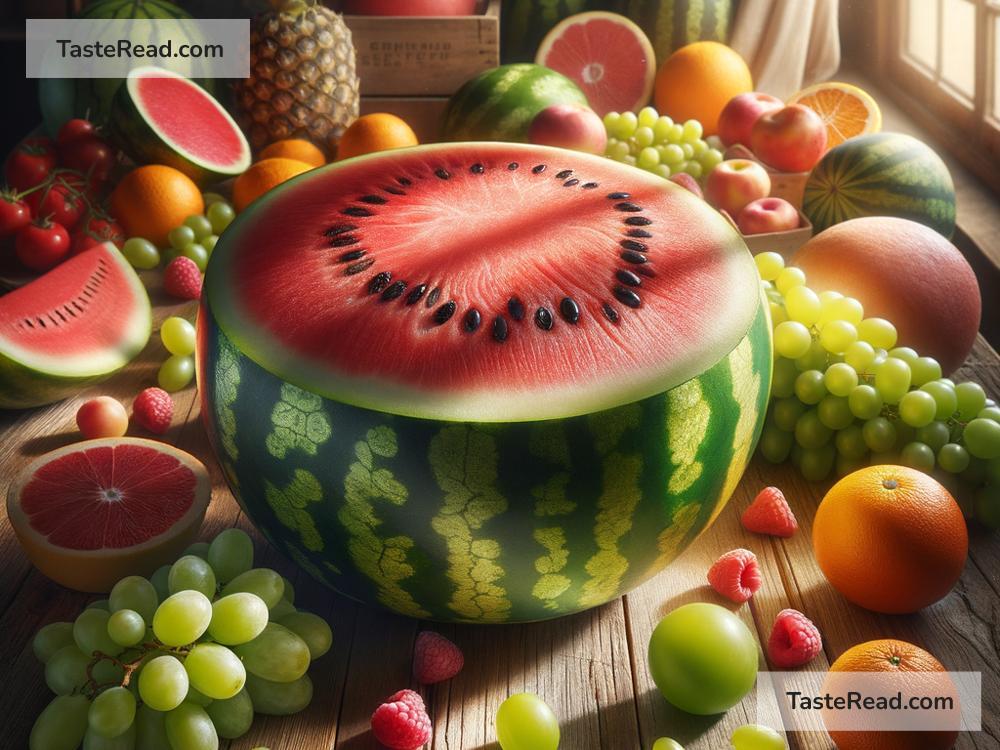The Science Behind Seedless Fruit Production and Its Impact on Taste
When you bite into a seedless watermelon or enjoy a seedless grape, it’s hard not to wonder how such fruits came to be. Nature usually packs its fruits with seeds as a way to ensure the next generation of plants. Yet, thanks to science, seedless fruits have become a common and convenient part of our diets. But how exactly are seedless fruits created? And does the absence of seeds affect their taste? Let’s explore the fascinating science behind seedless fruit production and its impact on flavor.
How Are Seedless Fruits Made?
Seedless fruits aren’t some magical creation—they’re the result of careful agricultural practices and plant science. There are several ways seedless fruits are produced. Let’s dive into the main methods.
1. Sterility Through Hybridization
Some seedless fruits are made through a process called hybridization. This means combining two different plants to create a hybrid. For example, seedless watermelons are usually produced by crossing two types of watermelon plants with different numbers of chromosomes.
Chromosomes are tiny structures in cells that carry genetic information. When two plants with mismatched chromosome counts (e.g., one with 2 sets and another with 4 sets) are crossed, the resulting plant often has trouble making seeds properly. This is because the chromosomes can’t pair up correctly during pollination, which leads to seedless fruits.
2. Parthenocarpy: Fruits Without Fertilization
Another method uses a natural process called parthenocarpy. Parthenocarpy happens when fruits grow without seeds because fertilization—the process of pollinating the flower to create seeds—fails or isn’t needed. For example, fruits like bananas often grow this way. Farmers and scientists encourage parthenocarpy in certain plants to ensure seedless fruit production. Some varieties of cucumbers and tomatoes are also grown this way.
3. Chemical Agents and Hormones
In some cases, seedless fruits are produced by treating plants with chemicals or hormones that mimic fertilization signals. These substances trick the plants into producing fruit without seeds. This method is sometimes used for oranges and lemons.
4. Genetic Modification
Seedlessness can also occur through genetic modification, where scientists alter a plant’s DNA to prevent it from forming seeds. While this method isn’t as common as hybridization or parthenocarpy, it’s another approach to creating seedless fruits.
Why Do We Grow Seedless Fruits?
Seedless fruits offer many benefits. First, they’re easier to eat. Think about how much more enjoyable it is to bite into a watermelon slice without worrying about picking out seeds. Seedless fruits are also more appealing to children and adults alike, making them a popular choice for snacks, desserts, and juices.
For farmers and producers, seedless fruits have an added advantage: they can be more consistent in size and quality. When farmers grow seedless fruits, they often get uniform crops that are easier to harvest, sell, and transport. As a result, seedless fruits tend to dominate the market.
Does Seedlessness Impact Taste?
One big question people often ask is: Does removing seeds affect how fruits taste? The answer isn’t straightforward because taste depends on several factors, like the fruit’s variety, how it’s grown, and even how ripe it is when picked.
1. Sugar Levels and Sweetness
Seedless fruits often have similar sugar levels to their seeded counterparts. Scientists carefully breed plant varieties to ensure seedless fruits are sweet, juicy, and flavorful. In some cases, people may even perceive seedless fruits as tasting better because they’re easier to eat—they don’t have to worry about dealing with seeds, so they can focus on the flavor.
2. Texture
Seedless fruits sometimes have a slightly different texture from regular fruits. For example, seedless watermelons might be a bit firmer than seeded ones. However, many people barely notice these differences.
3. Consumer Preference
Taste perception is subjective. Some people believe seeded fruits have a richer flavor, while others find seedless fruits more enjoyable because they’re hassle-free. Ultimately, whether a seedless fruit is “tastier” depends on individual preferences and the quality of the fruit.
Is There a Downside to Seedless Fruits?
While seedless fruits have clear advantages, there are a few downsides to consider. Many seedless fruits rely on human intervention for reproduction, which means farmers need to carefully manage their plants instead of letting seeds create new plants naturally. This can make farming seedless fruits more complex and resource-intensive.
Additionally, some people argue that seedless fruits limit biodiversity. Since seedless plants don’t reproduce naturally, farmers often grow the same types of seedless plants over and over. This practice can reduce genetic diversity in crops, making them more vulnerable to disease or pests.
Final Thoughts
Seedless fruits are a wonderful example of how science can innovate to meet human needs. By using techniques like hybridization and parthenocarpy, farmers and scientists have made fruits easier and more enjoyable to eat. While seedlessness doesn’t significantly change the taste of most fruits, it does make them more convenient, driving their popularity around the world.
Next time you snack on a seedless grape or slice into a seedless watermelon, take a moment to appreciate the science behind it. These fruits are the result of careful research, creativity, and a dash of ingenuity—a delicious blend of nature and technology.


